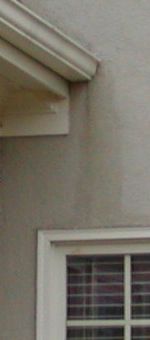 .This newsletter was originally created and shared by Professional Equipment tool company. They specialize in the sale of inspector related tools and can be found on the web at www.ProfessionalEquipment.com.
.This newsletter was originally created and shared by Professional Equipment tool company. They specialize in the sale of inspector related tools and can be found on the web at www.ProfessionalEquipment.com.
INSPECTING FOR WATER DAMAGE
From broken pipes to leaking appliances, water damage can wreak havoc, destroying a home, personal property, and irreplaceable family heirlooms. In many cases water damage can be avoided with routine maintenance and assistance from qualified contractors. Early detection could mean the difference between a simple mop-up job and major construction repairs.
KITCHEN
Water leaks can happen anywhere in the home, but they occur most frequently in kitchens, bathrooms and laundry rooms. Whether it's a slow drip or a sudden burst, water leaks can cause extensive damage.
Dishwasher - Check under the sink to see if the hose connection to the water supply line is secure and is not leaking. Check around the base of the dishwasher for evidence of leaks. Look for discolored, warped, or soft flooring materials or water damage to nearby cabinets.
Refrigerator - If your refrigerator has an icemaker, check the hose connection to make sure it is securely attached to the water supply line. The wet spot you see on the floor near the refrigerator may be melted ice cubes or it may be a crimped icemaker line about to burst.
Sink - Recaulk around sinks and pay attention to slow-draining pipes. This may indicate a partially blocked drain. Check the pipes under the sink for signs of water leaks.
BATHROOM
Showers and Bathtubs - Discoloration or soft areas around floors and walls near showers or bathtubs may be your first indication there is a leak. Check caulking at joints where the walls meet the floor or the bathtub, looking for cracks or mold. If either is found, clean and remove loose material and apply new sealant. If the shower walls or floor are tiled, a leak may develop if there are cracks or missing areas of grout.
Sinks - Check under the sink for signs of leaks from water supply lines or drain pipes.
Toilets - Placing inappropriate objects or too much toilet paper in the bowl can accidentally clog toilets, especially "low-flow" toilets now required in homes. Hanging bowl deodorants are frequently the culprits. These objects can lodge deep in the plumbing system, and can block the line or create an obstruction that grease and other materials can cling to - eventually causing blockage. In addition, some chlorine tablet cleaners may corrode some of the internal components, eventually leading to a leak.
LAUNDRY/UTILITY ROOM
Washing Machine - Inspect washing machine hoses regularly for wetness around hose ends and signs of bulging, cracking, or fraying. Replace the hose if a problem is found or every three to five years as part of a proactive maintenance program.
Water heater - Most water heaters last 10 to 15 years. Wet spots on the floor or a rusted tank may signal a problem. Hot water heaters should be installed on the lowest level of the home and always located next to a floor drain. If installed above or adjacent to finished spaces, the hot water heater should be placed inside a drain pan with the drain pan piped to the floor drain.
Air conditioning - At the start of the cooling season, have the A/C system serviced by a qualified contractor. Make sure their service includes inspecting and cleaning the air conditioner condensation pan drain line to keep it free of obstructions. Change the air filters on a regular basis.
BASEMENT
Sump pump - Sump pump systems assist in keeping unwanted water out of your home. Battery-operated back-up sump pumps can offer a degree of protection against power failure or failure of the primary pump. A generator can also be used to power the pump in case of a power failure. Test the sump pump before the start of each wet season to ensure it is in working order. Sump pumps are not intended to last more than 10 years and must have some components replaced or serviced within those 10 years.
GENERAL TIP
Check for hidden leaks by turning off faucets, all water-using appliances, and not flushing toilets for one hour. Record the water meter reading. If the flow indicator is spinning or the meter reading has changed while no water is being used, a leaking pipe may exist.
 ROOF
ROOF
Outside The Home
The devastation isn't limited to the inside of the home. Leaking roofs, poor drainage, and clogged gutters and downspouts can also lead to significant water damage inside your home.
Warning Signs Missing, curling, cupping, broken, or cracked shingles.
Damage or deterioration around the flashing at chimneys, vents and other junctions.
Damage or deterioration in valley areas of the roof.
Water stains on your ceiling may signal a leak in the roof. If possible, check your attic around flues, plumbing vents, and chimneys.
Pooling or ponds of water that fail to drain from flat or low sloped roofs may indicate low areas and inadequate drainage.
Information Source: State Farm Insurance